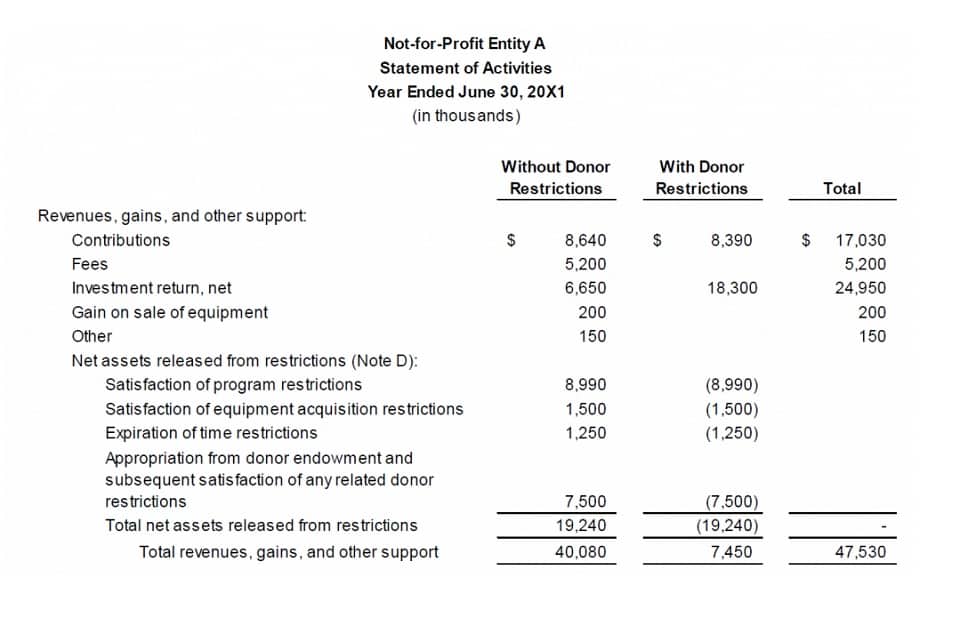
They can be used to perform straightforward and repetitive accounting processes, like calculations, inputting data, and keeping on top of financial controls. You can start using RPA to boost your career prospects now – read our blog, How will robotic process automation impact your career in finance? The marriage of accounting and automation is ushering in a new era of financial management. The benefits are accounting automation palpable, from heightened accuracy and streamlined operations to empowering accountants as strategic advisors. The journey towards automated accounting is one of transformation, where human expertise intertwines with technological innovation to shape the financial landscape of tomorrow. Accounting professionals hold the keys to crucial company information and help shape the business’ strategic decisions.
Forbes Daily: Election Gambling Faces An Uncertain Future
Imagine that you run your own marketing agency, and you provide monthly social media management services to Client XYZ. Rather than needing to remember to send their invoice on the last workday of each month, you could set up a recurring invoice so that they automatically receive their bill. That’s a simple example, and automated workflows can have numerous triggers, actions, or results and become far more complex than that. You’ve probably heard the cliché about there being more than one way to skin a cat, and you’ll admit that you and your team do things differently. There might even be some discrepancies in the way different members of your accounting department or finance team get things done.
- For instance, an accountant can interpret insights and financial data and help you make informed decisions about your business moving forward.
- Turning accounting into a single source of truth allows for advanced forecasting and scenario planning.
- These advances not only streamline processes but also ensure real-time updates and accuracy.
- Automating accounting workflow can save you time and help you ensure that your financials are as accurate as possible.
- Read on to discover accounting and common interview questions employers may ask you during the hiring process and how you can prepare with techniques like the STAR Method to answer successfully.
- Machine learning can also be used to check compliance automatically, so you won’t have to worry about costly breaches.
- Automation in the accounting industry has allowed businesses to streamline financial management and make more informed business decisions.
Accounting automation benefit #6: improved customer relationship management

Time saved on routine tasks leads to higher productivity, leaving accounting teams free to perform higher-value activities such as analysis and strategic planning. Automation can also shorten payment cycles, improving vendor relationships and offering discounts for early payments. Accounts payable automation generally saves time, lowers operational costs, decreases storage space, and improves financial data accuracy and transparency. This may include invoice processing, expense tracking, payroll management, financial reporting, reconciliations, and more.
The challenges of implementing robotic accounting
Cloud-based solutions, for instance, facilitate remote access to financial data, enabling collaboration across geographies and time zones. This seamless connectivity empowers businesses to operate efficiently in the global arena. The reality is that AI and automation are tools accountants can use to make their lives easier. Instead, they will save them time, foster creativity, reduce errors, and mitigate risks. HighRadius offers organizations a comprehensive record-to-report (R2R) solution, leveraging cutting-edge technology to transform accounting processes. With end-to-end capabilities, it streamlines and automates various workflows, resulting in a remarkable 30% reduction in days to close.
- Entry-level jobs may find that much of their work is automated, which may change the ways new accountants gain experience and training in the field.
- It also ensures the accuracy of payroll reports, leading to reduced disputes and higher employee satisfaction.
- Coursera’s editorial team is comprised of highly experienced professional editors, writers, and fact…
- The ability to authorize certain users is key to preventing data security breaches.
- Accounting software helps record payments, manage costs, invoice clients, reconcile transactions, detect errors, and close books, streamlining everyday accounting tasks.
- Plus, automation also means you don’t have to sink time into mundane, mindless, or time-consuming tasks.
- If each employee earns an average annual salary of US$50,000, a total of US$1 million salary cost would be incurred.
General Ledger Accounting Software
To explore the benefits of using Karbon’s workflow automation capabilities, you can calculate your firm’s ROI using Karbon’s ROI calculator. A practice management solution that integrates with proposal software (such as Ignition and GoProposal) will automate key steps in this process. Use our software evaluation template to decide which accounts receivable software you must invest in.
Will accounting be automated?
Since they have access to readily available financial reports, accountants can do their jobs better by allowing them to make educated business decisions faster. Besides providing better organization and security, accounting https://www.bookstime.com/ automation also allows for quick presentation and distribution of precise financial data. All reports are available for anyone in the company that needs them, helping simplify the reconciliation of audits and records.
- The ability to customize past the standard profit and loss financial statements can also be useful.
- Employers ask this to gauge your familiarity with the various software programs available, especially those you’d be using in the role you’re applying to fill.
- These can include anything from data entry and accounts payable management to performing audit tests and generating financial reports.
- The backbone of accounting automation rests upon an array of innovative technologies that harmonize to optimize financial operations.
- On the other hand, challenges, risk factors and obstacles must also be studied in detail and tackled in an effective and efficient manner.
Leaman Crews is a freelance writer and technology consultant specializing in finance, HR, and enterprise IT. A former newspaper publisher and editor, his work has appeared in publications across the United States. Dig into the ins and outs of account receivable software with the help of Accounts Receivable Software Buyers Guide. Don’t worry—if something changes, it’s easy to stop or pause your payroll schedule automation and make any tweaks or updates. From there, QuickBooks will walk you through a four-step process for automating your payroll.
Accounting automation can be a powerful tool for business owners to use when eliminating manual accounting issues. In addition, it’s important to explain to employers how your skills, experience, and education can translate to a company’s success. Finally, since your AP automation solution processes invoices faster and more accurately, you’re in a better position to be able to pay your debts to suppliers on time. Let’s turn our attention to some of the specific, tangible benefits that leveraging accounts payable automation can bring.
Ensure consistent accounting practices
With some routine tasks handled by software, accountants can pivot towards more strategic roles, such as data analysis, trend predictions and financial forecasting. Traditionally, accounting is about organizing business documents in chronological order, said Julia Blockberger, MBA, CPA, an adjunct accounting instructor at SNHU who has experience working with AIS. Blockberger worked in a bank’s data processing center, and has sold and installed accounting software to clients, while also providing consultation to those wanting to learn more.